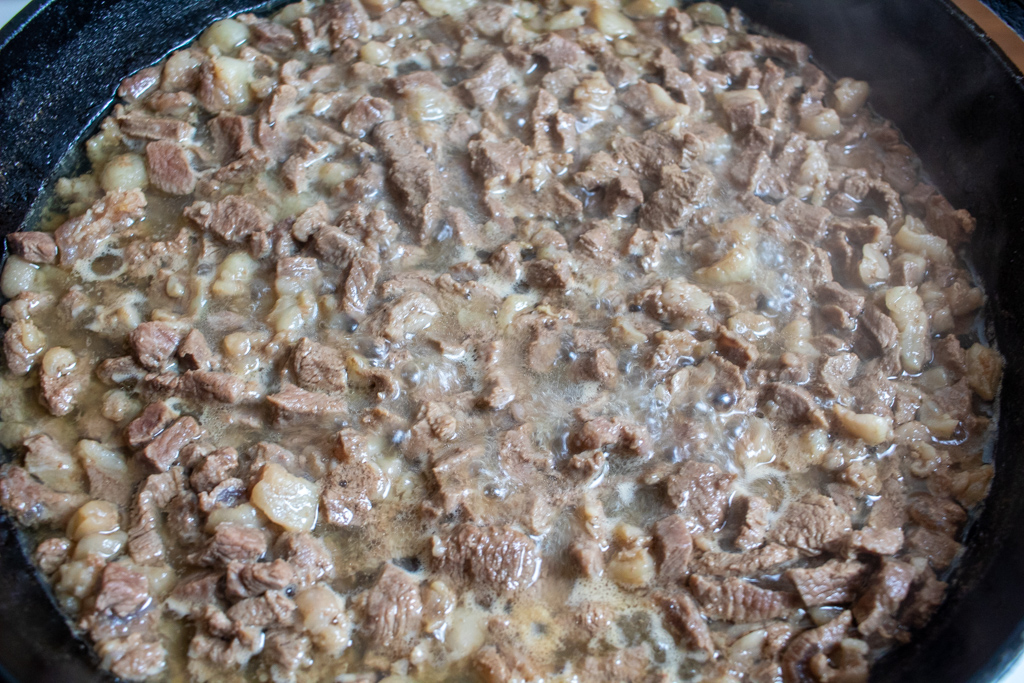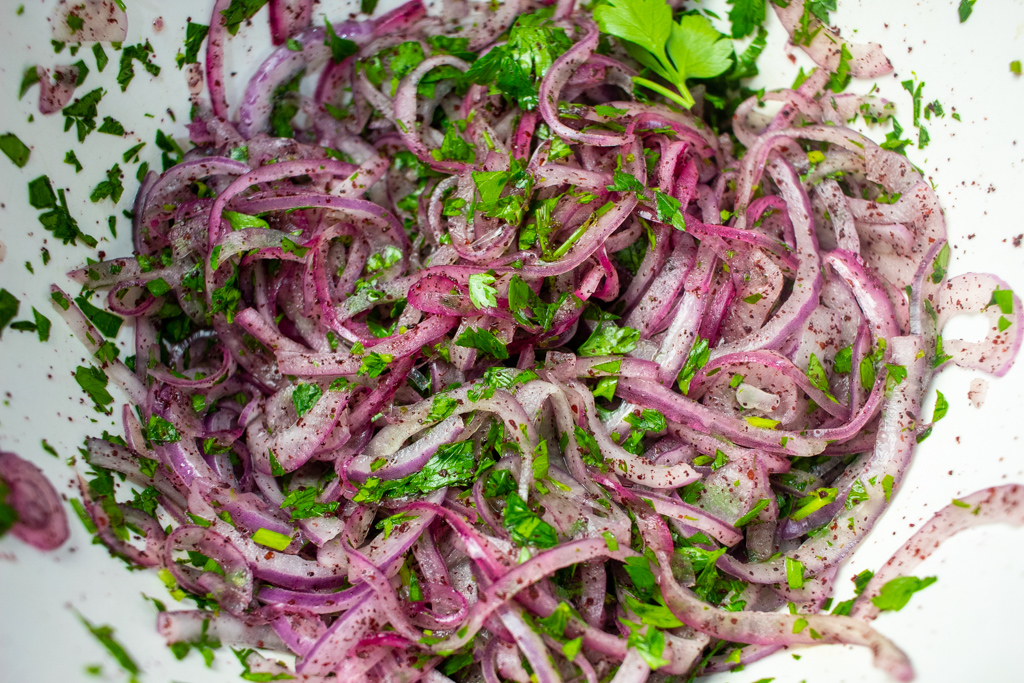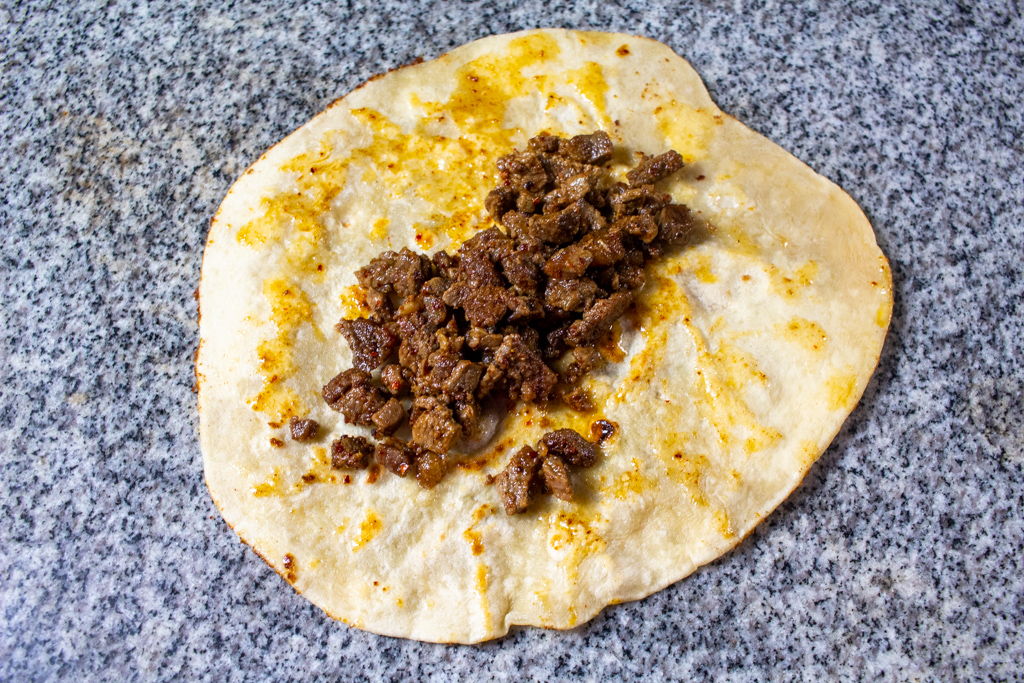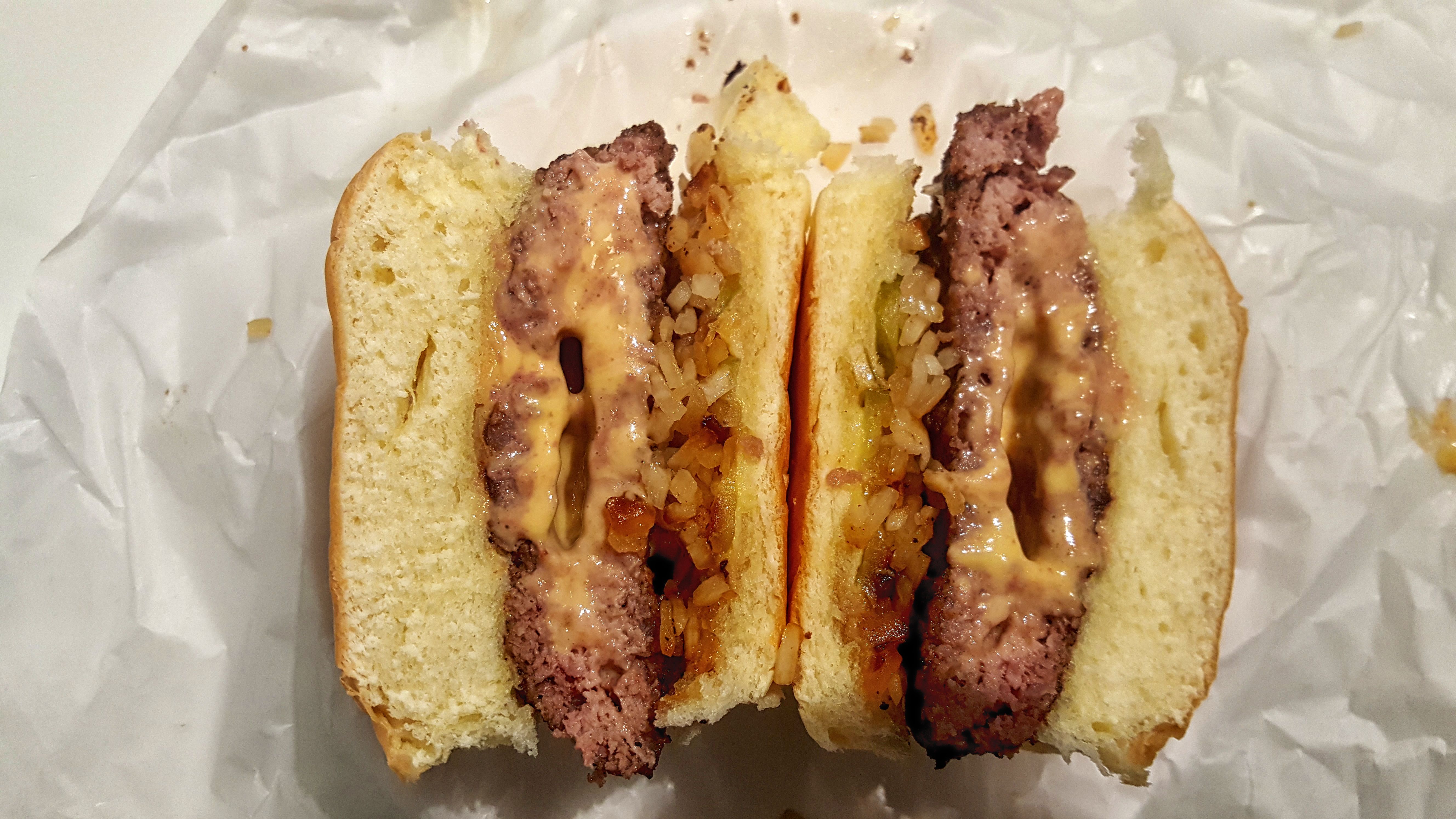Turkish Tantuni
Mersin is a large port city along the southern coast of Turkey, sometimes called the “Pearl of the Mediterranean.” Over 900 kilometers from sprawling Istanbul, it is far closer geographically to the Levant than to the Bosporus Strait, and many of its culinary traditions, like Turkey itself, span the gulf between the Caucasus, the Middle East and Europe. Street vendors sell Adana kebabs, named after nearby Adana, made from minced lamb, fat, and spices, similar to kofte and other minced-meat kebabs; kisir, a bulgur wheat-based salad similar to Middle-eastern tabbouleh; künefe, the local variant of Syrian dessert kunafah using shredded phyllo rather than the spun pastry kataifi. Kurdish influence or Levantine, it is difficult to say whence some items came to Mersin.
Among the most popular of Mersin’s street foods, and one that has gained popularity across Turkey even in far-off Istanbul, is the wrap called Tantuni. The website Culinary Backstreets says that Tantuni is sometimes described as the Turkish equivalent of a taco. I could not find any corroborating reports of this, but as a result of the brief amount of research I did I must beg you never to Google the phrase “Turkish taco.” That knowledge is a door that once opened, can never be closed.
However, I did find myself thinking of certain types of tacos in the process of researching and making these Turkish wraps. Tacos de canasta, perhaps, or Quesabirria tacos, where the tortillas are dipped in the brightly colored fat that has been rendered while the meat cooked. Tantuni makers typically lay the lavash wraps atop the meat to warm the bread before filling it, resulting in a slick of reddish meat fat inside the wrap enhancing its flavor.


The meat for tantuni is chopped finely and first simmered in salted water, then spiced and fried in oil–traditionally cottonseed oil, though home recipes often call for the more easily-sourced butter. The street vendors use a special pan for this called a tavası, which has a wide flat brim surrounding a small central depression. The meat is kept warm around the periphery and occasionally sprinkled with water to keep it from drying out. When a tantuni is ordered, some meat is scooped into the central hollow, where the frying oil has been kept ready at temperature. Some water is often scooped into the oil as well, where it reacts violently, quickly flash-boiling to steam and spattering bubbles that strike a percussive tone against the thin metal of the thin metal bottom of the tavası—tan-tun, tan-tun.
That is the generally accepted story about the origin of the name tantuni anyway. I cannot confirm that sound, though it does seem credible, as I do not have a tantuni tavası to test it with. I will simply have to use my trusty cast-iron skillet. Tantuni is often made with beef, sometimes lamb, and according to some of my research were originally made with offal. I chose to use lamb, but the only lamb I was able to source on short notice were lamb loin chops that were on sale, yet still too expensive to boil. Yet boil them I did. Many of the recipes I read specifically said to use lean meat, since fat will be added when the meat is fried, but the fat caps on these chops were too nice to lose.

After the meat was boiled, I cleaned out the pan, melted a few ounces of butter in it, and then fried the meat in the butter, with salt, freshly-cracked black pepper, cumin, and Aleppo pepper. The Aleppo pepper gave the butter and lamb fat a nice reddish hue.

The tantuni wrap is minimally dressed; that is, there is no broad array of options presented; this is not a fast casual Turkish concept. Each tantuni vendor’s recipe is slightly different but generally, the salad accompaniment for a tantuni involves onions, sliced thin, salted and mixed with sumac and parsley. Possibly also some chopped tomatoes.

I suppose it’s possible that tantuni can be served in a bread roll–it would be terrific, frankly. For the most part, lavash is the preferred vehicle. Lavash is a flatbread common in various forms over the south Caucasus–Armenia, Iran, Kazakhstan, Azerbaijan, Turkey. It can be leavened or unleavened, plain or studded with seeds, soft and pliable or brittle and cracker-like. A steakhouse in my hometown had a bread service that included large sheets of mildly sweet, crisp lavash, which is how I first encountered it. In Turkey, lavash is used to make dürüm, or wraps like doner kebab or tantuni. I had some frozen but elected to try making it myself using this recipe. Rolling out flatbreads is difficult, but I usually manage to end up with at least a couple that look OK.

With the pieces in place, there’s nothing left to do but put the wrap together. Of course I start with the step of warming the lavash atop the frying lamb.

This not only has the effect of warming and softening the flatbread but also imbues it with some of the Aleppo-chili-tinted butter and lamb fat.

Then a scoop of meat

A good handful of sumac onions

And some diced tomatoes.

Then roll it up, folding over one end to keep things from falling out, and voila!

And it’s terrific. The strange process of cooking the lamb–boiling, then seasoning and stir-frying–resulted in very tender, well-seasoned, slightly greasy (in a good way) meat that is an ideal candidate for wrapping in soft chewy lavash. The sumac onions with parsley are as good a condiment as I can imagine for this–the onion’s natural pungency muted by salting, allowing the parsley to brighten and amplify the sour sumac flavor. The reddish fat from the lamb combines with the tomato’s and onion’s juices to create a natural sauce rendering any additional condimentation redundant.
The wrap was an immediate hit at my house, and though it was quite a bit of work making lavash by hand, and even sale-priced lamb ran a bit higher than I’d want a typical meal to cost us, I think with some modifications–using beef instead, and frozen lavash or even flour tortillas–this could become a regular weeknight dinner for us.

I like sandwiches.
I like a lot of other things too but sandwiches are pretty great











Recent Comments